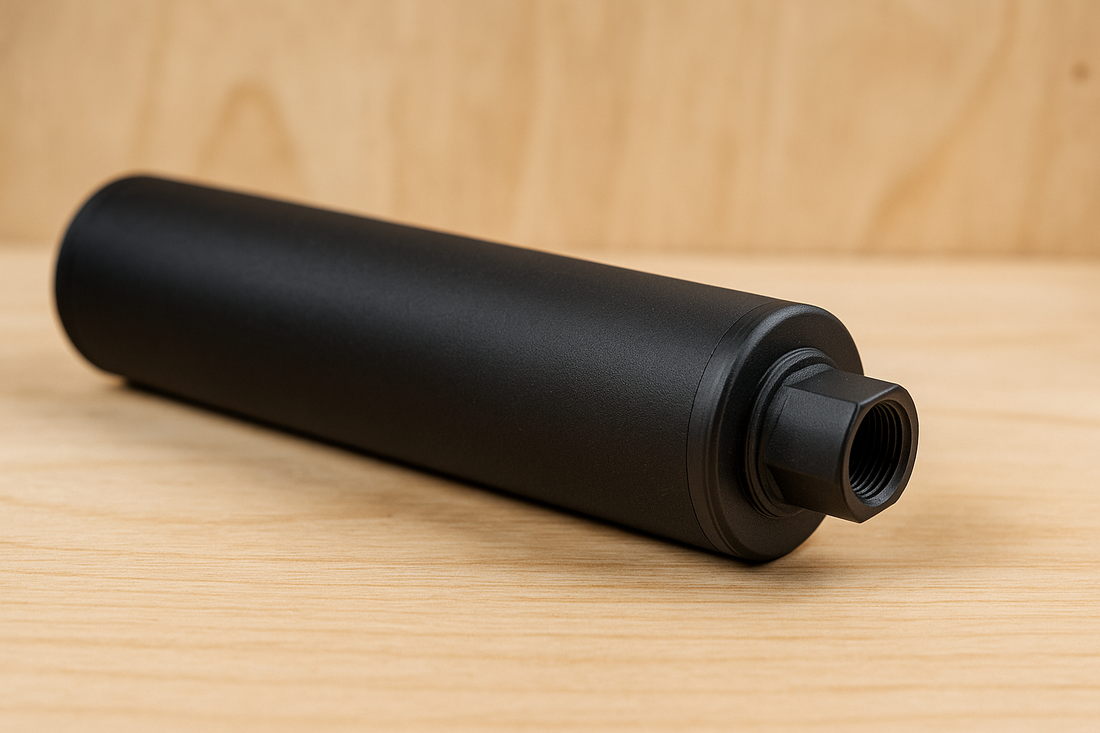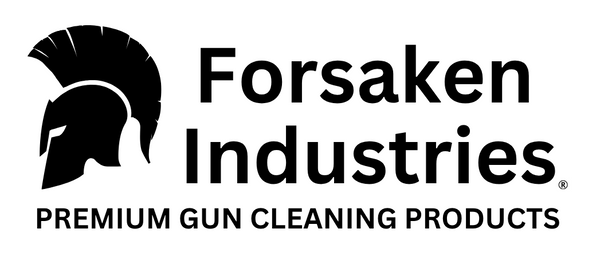How to Clean a Suppressor: Step-by-Step Guide for Sealed & Serviceable Cans
Whether you're running rimfire, pistol, or full-auto rifle suppressors—this is your ultimate guide. Learn the proper way to clean both sealed and serviceable silencers, prevent carbon and lead buildup, and extend the life of your gear with expert tips from Forsaken Industries.

✅ How to Clean a Suppressor: Step-by-Step Guide for Sealed & Serviceable Cans
🧼 One Mission, Three Enemies: Carbon, Lead & Time
If you’re running suppressed, you already know the perks—reduced recoil, quieter shots, and better control. But there’s a cost: buildup. Carbon. Lead. Unseen grime that wrecks performance.
And while some say you “never have to clean a rifle suppressor,” that myth gets shooters in trouble.
At Forsaken Industries, we’ve run cans on full-auto, suppressed SBRs, and rimfires—and we’ve cleaned up the carnage. Here’s the field-tested, no-BS way to clean your suppressor so it stays mission-ready.
🧱 Suppressor Types: Why It Matters for Cleaning
| Suppressor Type | Needs Cleaning? | How Often? |
|---|---|---|
| Sealed Rimfire | ✅ Yes | Every 350–500 rounds |
| Sealed Pistol | ⚠️ Sometimes | 1,500–2,000 rounds (if using lead ammo) |
| Sealed Rifle | ❌ Rarely | Only light solvent flushes occasionally |
| User-Serviceable (All Types) | ✅ Yes | Based on ammo type + fouling |
🔩 How to Clean a Sealed Suppressor
You can’t take it apart—so you have to dissolve the fouling from the inside out.
🔧 What You’ll Need:
- Forsaken CLP Gun Cleaner (non-toxic, carbon-busting formula)
- Plug or cap (to seal one end of the suppressor)
- Nylon brush or pipe cleaners
- Bucket or glass jar
- Nitrile gloves + ventilation
🧪 Step-by-Step:
-
Seal one end of the suppressor with a silicone plug or rubber cap.
-
Fill with CLP or solvent—let soak for 12–24 hours.
-
Gently agitate by rotating or tapping lightly.
-
Drain and flush with hot water or compressed air.
-
Let dry completely.
-
Fire 3–5 rounds through it to blast out residual debris.
⚠️ Never clean a suppressor with flammable solvent and immediately shoot it—let it dry completely.
🛠️ How to Clean a User-Serviceable Suppressor
If your can breaks down, you’re in luck—it’s easier to scrub and inspect.
Tools You’ll Need:
- Forsaken CLP
- Baffle removal tool
- Nylon or brass brushes
- O-ring lubricant (non-petroleum)
- Ultrasonic cleaner (optional)
Field-Tested Method:
-
Disassemble your suppressor per your manual.
-
Soak baffles in CLP or ultrasonic cleaner (10–20 mins).
-
Use a nylon brush to scrub fouling—avoid steel brushes.
-
Clean the piston and booster housing (for pistol suppressors).
-
Check and lube O-rings, replace if damaged.
-
Dry all components completely.
-
Reassemble—torque properly to avoid misalignment.
💥 Ultrasonic Cleaner vs. Manual Cleaning
Ultrasonic: Great for rimfire and deep fouling.
Manual: Ideal for quick maintenance between sessions.
💡 Pro tip: Don’t run aluminum baffles too long in ultrasonic cycles—it can wear soft edges.
🧴 What’s the Best Cleaner for Suppressors?
Choose a solvent that’s carbon-cutting but non-corrosive.
Forsaken Industries Carbon Cleaner Solvent is field-tested for:
- Carbon and lead fouling
- Safe on Cerakote, anodized aluminum, titanium
- No offensive fumes
👇 Grab our Suppressor Cleaning Solvent
⚠️ Suppressor Cleaning Do’s & Don’ts
✅ DO clean rimfire suppressors often
✅ DO wear gloves and ventilate
✅ DO follow your manufacturer’s torque settings
❌ DON’T use steel brushes on aluminum parts
❌ DON’T reassemble with wet solvent inside
❌ DON’T use a tumbler—it can destroy threads
🧠 FAQs: Suppressor Cleaning
Q: How often should I clean my suppressor?
A: Rimfire = every 350–500 rounds. Pistol = 1,500+. Rifle = rarely, unless lead ammo is used.
Q: Can I use CLP on suppressors?
A: Absolutely. Forsaken CLP was engineered for suppressor fouling and carbon-heavy systems.
Q: Should I clean even if I use copper-jacketed ammo?
A: Yes—carbon still builds over time, especially in rimfire or subsonic loads.
🎯 Final Word: Suppressors Aren’t Maintenance-Free
You wouldn’t run your engine without oil. Don’t run your suppressor fouled to hell.
Whether it’s a sealed can that needs a solvent soak or a full teardown of your BANISH-style baffle stack, cleaning is part of the mission.
Forsaken Industries was built by veterans who needed gear that works under fire—and cleaning your suppressor is part of that reliability chain.
